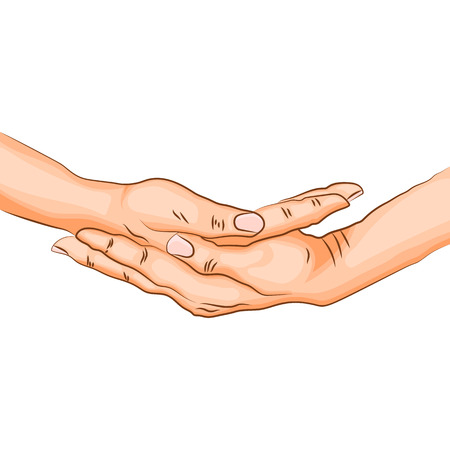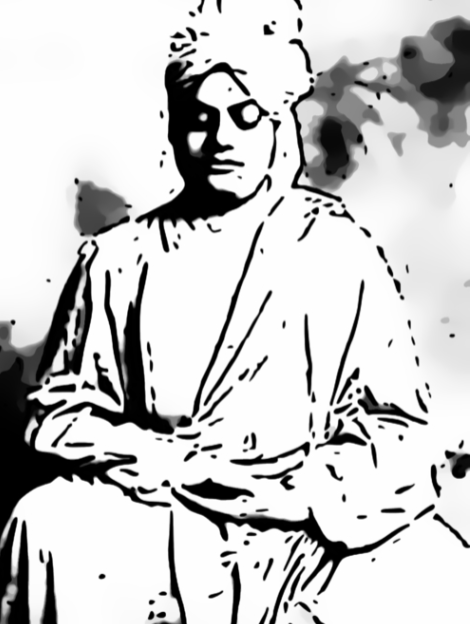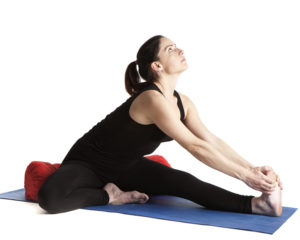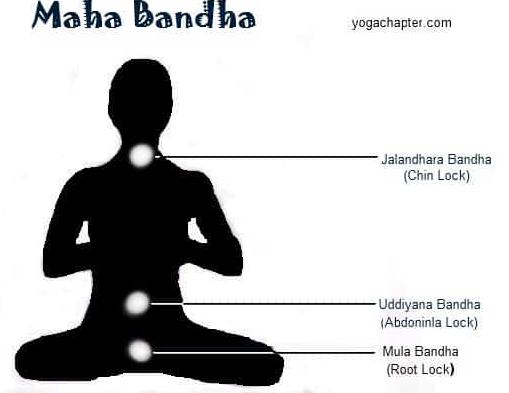What Are The 5 Types of Mudras In Yoga? How Do Yoga Mudras Work?
Mudra is a gesture, performed by hands most of the time. Mudras are practiced in Hinduism, Buddhism, and Jainism also. It is also widely practiced in various dance performances in India.
Mudra is very commonly practiced for Hindu Gods and Goddesses Puja or festivals and rituals. Different rituals in Buddhism and Jainism are closely related to Hinduism also widely practiced and participated in postural orientation in festivals.
Table of Contents
What Are The Mudras In Yoga?

Mudra in general means hand or gesture performed by our hands. It is a part of yoga that is involved in body steadiness and body strengthening by practicing different posture performed by our hands.
Mudra is performed in general conjunction with pranayama as well as yoga. It has a deep connection with Hatha Yoga. Yoga along with mudra is practiced in different parts of India.
How to Do/Perform Mudras?

Mudras can be performed by simple asanas as such as padmasana, vajrasana etc. While you do any mudra your body and mind are involved equally in every action you impart with mudra.
When to Do Mudras?
Mudras can be done anytime and anywhere. Mudras are meant to perform after food or before food, morning, daytime, evening anytime no problem at all. However, when you are on empty stomach, and in the morning your efficiency increases to a great extent.
Where Mudras Are Practiced?
Mudras are practiced in various regions of South Asian countries starting from India, Tibet, and parts of China, Laos, Cambodia, and Vietnam, etc. In hatha yoga, we have various books written long back.
The yoga practices are found in many different places starting from Bengal to Rajasthan, even in northeast India also. The yoga books explaining mudra are written in different pre-version of Sanskrit or normal Sanskrit language.
What is the Connection of Mudra with Hatha Yoga?
The main activities are performed for mudra in hatha yoga is a kind of internal posture. They bring steadiness to the body. For example, Mahamudra, Viparita Karani, Vajroli mudra, etc. are performed for various internal actions inside our body.
Source of Mudra
Mudra is found mainly in 3 different ancient books on hatha yoga.
- Amritasuddhi
- Gheranda Samhita
- Hatha yoga Pradipika
Amritasiddhi
Amritasiddhi is an older form of hatha yoga book which describes the idea of practicing “Bindu Yoga”. It is mainly practiced for the placing of Sun moon and fire inside the body.
Bindu Yoga is depicted in two versions: an early Bindu model and another one is Late Bindu model. It is also called the early kundalini model and late kundalini model subsequently.
Amritasiddhi discusses six-limbed yoga and Yogasutras written by Patanjali explains about 8 limbs of the yoga system also known as ashtanga yoga.
Gheranda Samhita
Gheranda Samhita talks about mudra for body steadiness. It is also a yoga book that explains classical hatha yoga. different version of yoga book has different limbs of yoga explained in that.
In Gheranda Samhita it is an explanation about the Ultimate Brahma or the Supreme Soul. It explains thoughts of two people and it is about the discussion that happened between Gheranda to his student Chanda. it is a seven-fold yoga practice.
Hatha Yoga Pradipika
One of them is Hatha Yoga Pradipika which explains four-limbed yoga practices for mukthi or moksha. Whereas Gheranda Samhita talks about 7 limb Yoga for core Yoga exercises.
In hatha yoga pradipika or we know as “light on hatha yoga”, is four limbs yoga practice. It clarifies many different ideas on “Bindu Yog”. There are two versions of hatha yoga written here.
Relation of Mudra and Dance
Mudras are generally performed in Hindu rituals as well as Buddhist rituals in several ways. it can be seen in Bharatanatyam, Kathakali, etc. various dance practices in Indias classical dance practices. Even in Buddhist rituals, it is also performed in various dance performances.
Mudra and Tantra Yoga
Mudras have a special connection with tantra yoga. We have seen different symbols and depictions of different gods and goddesses in mudra posture in various places of India. For example, if we see thee the dance performance of Nataraja, it explains Nataraja mudra itself.
Nataraja mudra is also known as natarajasana which we have seen in the dance performance of Shiva with a specific gesture in the hand. it is a conjunction of mudra and asana.
How Do Mudras Work?
While you do a mudra it corrects the body-mind connection inside us. Each of the mudras is meant to perform a certain gesture or posture. These actions motivate our energy body to channel in a positive direction. So mastering the mudras with certain breathing patterns and yoga brings tremendous force to our body and mind.
Benefits of Mudras
There are various benefits of performing mudras.
- Mudra creates an amazing body-mind connection and improves focus and attention.
- Mudra practice improves concentration and awareness.
- It helps to throw away depression, negative feelings, anxiety, etc.
- A better sleep pattern is achieved by mudra practice.
- Good for managing blood pressure, diabetes, arthritis also.
Relation of Five Elements with Mudra
Through your fingertip, imagine you can construct the whole creation or universe. Every fingertip represents a certain energy channel within our body. By pressing a point or certain gesture through your finger you initiate the energy to flow in a certain direction. It is also known as the energy channelization of the energy body.
What are the Different Types of Mudra in Yoga?
Various mudras are performed by our hands and with our body-mind combinations. Within our body, there are several body locks, mainly in pelvic floor region, respiratory organs, and neck and vocal region. By performing yogasana or posture mudras are also performed.
There are 5 different Mudras present within and without our body. There are basic mudras that exist for channelizing our energy body within us. Such as
- Adhara – which holds our body
- Kaya – our physical body
- Hasta – posture with hands or simply hand gesture
- Mana – Manas, Chitta or mind
- Bandha – Various locks in our body
Adhara Mudra
- Yogic Sense: Perineal Mudras
- Style: Hatha Yoga
- Physical Presence: pelvic floor region
- Strengthens: pelvic floor muscles, waist, buttocks, Anus
- Duration: 15 to 30 seconds
- Repetition: None
What are Adhara Mudras?

These are mudras performed with our Aadhar or the mudras performed in pelvic floor region in our body. Aadhar means it’s the place where the whole body stays or holds our body.
Adhara Mudras in Hatha Yoga
Aadhar is a place of our body which is a very steady form of controlling the whole physical body. Some of the Adhara mudras are practiced as Ashwini mudra – the horse gesture, Vajroli mudra which is also called thunderbolt gesture, mahaveda mudra, sometimes referred to as great piercing mudra also.
Kaya mudra
- Yogic Sense: Postural Mudras
- Style: Hatha Yoga
- Physical Presence: Various parts of Physical body
- Strengthens: Legs, Abdomen, Neck
- Duration: 15 to 30 seconds
- Repetition: Two Sets.
What are Kaya Mudras?

In kaya mudra, Kaya means body, Mudra is a gesture. These mudras are postural yoga which are different physical postures performed by us. Different places in our body release the energy in a certain flow.
Kaya Mudras in Hatha Yoga
Various energy dimensions exist in our body by performing certain kaya mudra. We regulate these energy channels towards a higher dimension by performing different poses or asanas.
Kaya mudras are generally performed like yogasanas. For example, yogamudra, manduki mudra, or Vipareeta Karani mudra are very similar to the yoga posture we performed in Yoga asanas.
Hasta Mudra
- Yogic Sense: Hand Mudras
- Style: Hatha Yoga
- Physical Presence: Using both or single hand
- Strengthens Fingertips, wrist, shoulders, neck, etc.
- Duration: 15 to 30 seconds
- Repetition: As tolerable.
What are Hasta Mudras?

Hasta mudras (hand mudras) are performed by hand gestures. It is performed along with breathing practices and pranayama. Sometimes while we perform dhyana or meditation, hasta mudras assist in internalization.
Hasta Mudras in Hatha Yoga and Tantra Yoga
It has a specific connection with tantra yoga. While performing regional dance like Kathakali from Odisha or various dance forms in India is associated with hasta mudra. While we perform rituals of gods or goddesses in Hinduism or Buddhism it is widely practiced…
Mana mudra
- Yogic Sense: Head Mudras
- Style: Hatha Yoga
- Physical Presence: Above Neck Portion, Brain
- Strengthens: Tongue, Nose, Eyes, Ears
- Duration: 15 to 30 seconds
- Repetition: As tolerable.
What are Mana Mudras?

Mana mudra is also called Chitta mudra. There is a term called Chitta Suddhi related to Mana Mudra which is why it is also called head mudra. It is an important mudra for kundalini yoga.
Mana Mudras in Hatha Yoga
Various meditation techniques performed using our mind and with different organs above our neck by mana mudra. The main organs are involved here are our tongue, nose, eyes respiratory organs, etc.
Bandha Mudra
- Yogic Sense: Lock Mudras
- Style: Hatha Yoga
- Physical Presence: respiratory organs, pelvic and vocal regions
- Strengthens: Throat, Abdomen, Internal Nasal area
- Duration: 15 to 30 seconds
- Repetition: As tolerable.
What are Bandha Mudras?

Bandha mudras are also called body lock mudras. There are different places where power energy channels inside the body are locked. Performing certain internal actions we can open these locks. These bandhas exist in conjunction with our breathing practices.
They are performed mainly for three body lock exist inside our body; named as respiratory pelvic and vocal. They come through unification for different channels of energy flow inside our body.
For example sometimes with deep breathing our body releases the body locks. Bandha mudras correct the respiration process, vocal cord, and pelvic muscle related issues.
Bandha Mudras in Hatha Yoga
In our body, pelvic floor is the place for mooladhara chakra or we say mulabandha. It is related to perform and harness our sexual energy. This sexual energy has such potential it creates an essence of all energy to flow up the spine to Sahasrar chakra.
The energy body that exists within the sexual energy can be transformed into a higher dimension for betterment of our body steadiness. It creates subtle energy tranquility within our body.
FAQ’s on Working of Mudras in Yoga
Can Mudras Cure Diseases?
Yes, mudras are very helpful in bringing many physical and mental benefits. With regular practice of mudras problem in our major organ are cured. After regular 30 days of mudra practice, your heart problem will be decreased to a great extent.
Sometimes heart-related diseases like high blood pressure, diabetes are also curable by regular mudra practice. Mudras help correct the sleep pattern mudras bring mudras to cure anemia, loss of memory to a certain extent.
Which Mudra is Best?
There is no such thing called the best mudra. People have different requirements and opinions about different mudra. For example, Mahamudra, Moola Bandha mudra, etc. are considered one of the highest degrees of mudras performed by someone.
Other practices also as dhyana mudra, Gyan mudra is best known for meditation posture. Some people practice Bandha mudras which opens energy locks for our vocal region, throat, and pelvic floor region. There is nothing called best mudra that exists.
Do Mudras Actually Work?
In yogic culture, mudras are a definite bonus for our betterment. We try to achieve through mudras for increasing our energy level and channelizing energy in a certain direction based on our activities.
Mudras cure many mental issues also. Such as short-term memory loss, anxiety, stress disorder, etc. Once you keep on practicing for a regular one month then you will feel the difference.
Which Mudra is best for weight loss?
Various mudras exist for maintaining proper weight in our body. In the yogic system, body is considered as the Aadhar or the place where energy stays. For a steady weight loss, you can practice these mudras –
- Agni mudra
- Gyan mudra
- Linga mudra
- Surya mudra
- Prana mudra
What are the Mudras Practiced for Good Sleep?
Various mudras are practiced for achieving a beautiful skin tone. Yoga in combination with pranayama and mudra contributes amazing skin benefits resulting in long-lasting glowing skin. The main mudras which are practiced for beautiful skin
- Prana mudra
- Prithvi mudra
- Hridaya mudra
- Moola-Bandha mudra
- Ashwini mudra
Which Mudra is good for sleep?
Any kind of mudra you practice provides a better sleep pattern in our physical system. Aadhar mudras and Kaya mudras are generally practiced for better sleep patterns.
Kaya mudras are known for removing toxins from our bodies and cleansing the physical system. Once you have a toxin-free body better sleep or quality sleep is a natural consequence.
How Many Mudras are There in Yoga?
3 different mudras exist in the Amritasiddhi, 25 in the Gheranda Samhita, and a classical set of ten exist in the Hatha Yoga Pradipika.
How Many Mudras We Can Do in a Day?
We can do as many as 5 different mudras in a day. Not more than that. For each of the mudra, you can adjust time by 7-10 minutes. You adjust timings also. You can practice 3-4 times a day. Practicing one time is also beneficial for us. Mana mudra can be practiced any time anywhere.
Conclusion
Mudras a generally practiced in various forms within Hinduism, Buddhism as well as in Jainism. We have seen various forms of Gautama Buddha performing various mudras for the betterment of humanity. No matter what mudras are an important part of the culture we live for the ultimate realization to achieve… Cheers…
Further Reading
Have you enjoyed reading about “What Are The 5 Types of Mudras In Yoga? How Do Yoga Mudras Work?”? Also, check various Topics on Yoga and related topics on Yoga. Relevant issues like Porn in young people, Overpopulation in India 2020 also. Take a look at our collection of articles about books for life as well as other categories in health & Inspiring Indians Life also. Alternatively, read our article about the top benefits of honey for fighting against coronavirus to increase our stamina, & other interesting ideas for various vegetables in our daily groceries.
